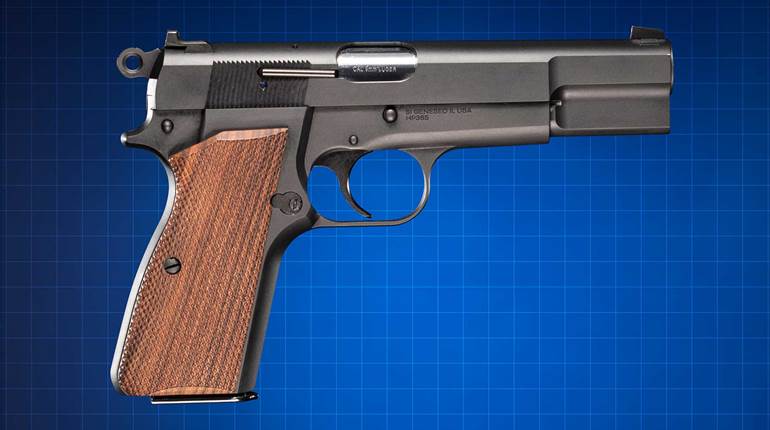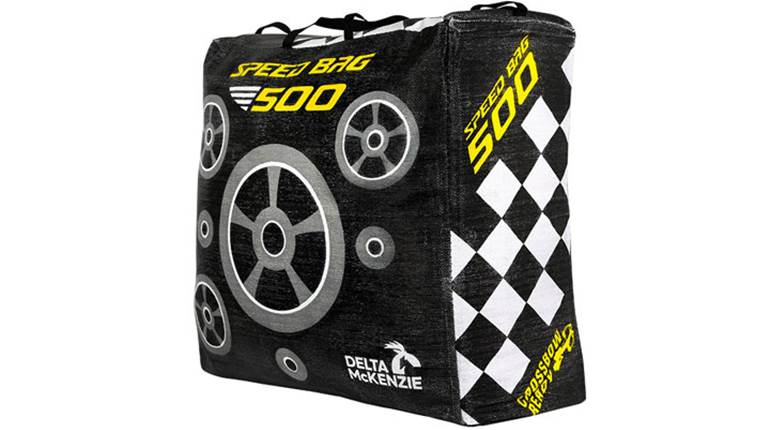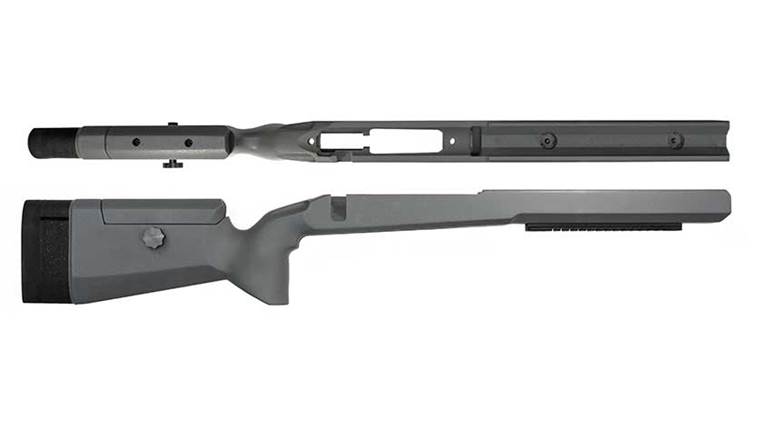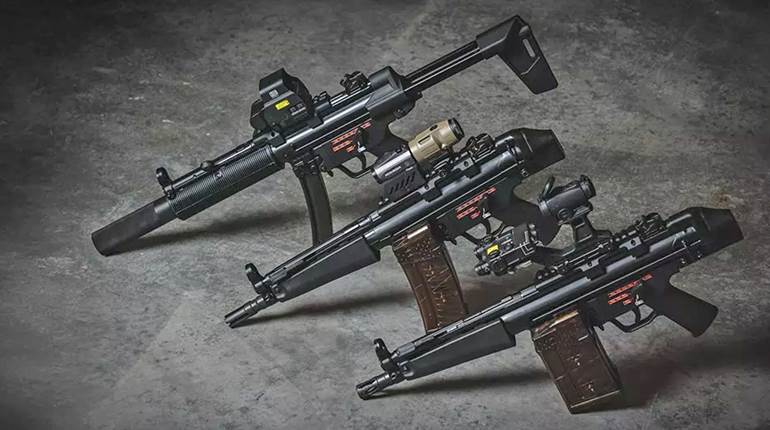
On the cover of the issue dated 79 years ago, NRA staff photographer John Scofield catches the moment when a student in the 1940 Small Arms Firing School at Camp Perry, Ohio, runs his M1 Garand rifle dry—catching the eight-round en bloc clip that just ejected itself clear of the gun in mid-air. Such “classic” training, as demonstrated by the shooter’s sitting position, has always been at the core of NRA’s mission, and it exemplifies one of the three forms of American riflery.
Rifleman” is a uniquely American word given the connotation in which we often use it. Many cultures embrace hunting, and quite a few have rifles commonly accessible for defense, but none as populous as ours has such a large and vital following dedicated to real skill at arms with the long gun. From the early colonists with their matchlocks to the present, a continuous thread of cultural association with the rifle and the importance of marksmanship runs through our history.
Even within the word “rifleman,” however, there are distinct ideas of what that means. First, we can set aside the Marine Corps’ reverent title for a basic infantryman or any Marine pressed into that role. Here, we are breaking down the title with respect to the rifle itself.
The very word suggests more than possession of a long gun, but implies a capability and skill with the implement. The term seems to me to also suggest an enthusiasm for or interest in that skill in a way that most sport terms do not. For example, words such as “golfer” or “fisherman” are usually appended with “avid” or “amateur” or some such in a way that rifleman isn’t.
Going a step further, and to the point, riflemen tend to be ascribed to one of three rather distinct schools or traditions of the craft. If I said “precision rifleman,” “classic marksman” and “defensive/patrol rifleman” chances are that you instantly have the correct mental pictures. And without much debate you can probably see these three as fairly distinct traditions. Many shooters will also instantly align themselves primarily within one of the traditions.
For those who don’t see the distinctions clearly, I’ll suggest that the three traditions are delineated more than any other factor by how the rifle is supported. In the classic school, the shooter almost religiously seeks perfect bone-structure support, while the precision shooter will actively seek artificial support as a first course and the defensive shooter is most focused on snap shooting the rifle with muscle support. Let’s look deeper into each of these, where they came from, cultural icons associated with them and current trends.
 Precision
Precision
The precision rifleman is one who is able to exploit the rifle’s inherent accuracy to connect with very distant and/or very small targets. The popular image now is the Precision Rifle Series competitor on the sporting side or a police/military sniper on the duty side.
Both employing similar equipment and almost certain to be shooting from a position where the rifle’s weight is supported as fully as possible by an artificial support, either a natural or man-made object—a set of bags, advanced tripods or at the least a bipod attached to the rifle. As cutting edge as this school of riflery may seem to be, it actually has roots at least as deep as the other two.
Long before the rifle, or even the Revolutionary War-era musket, the early shoulder-fired, gunpowder projectile gun was the arquebus. These primitive firearms were often employed with monopods that allowed the shooter to rest the heavy piece in the forked end of a standing-height staff. As long guns matured, and shed weight, the rest was largely dropped as standard equipment in favor of a rest of opportunity, from breastworks in battle to a convenient branch or tree for the hunter and his longrifle.
Regular use of rests re-appeared on the frontier with commercial hunters like Buffalo Bill who used cross sticks to steady their aim with the heavy buffalo guns. Billy Dixon’s 1,538-yd. supported shot with a Sharps .50 played a deciding role in the Second Adobe Walls battle in 1874 and presaged the heavy precision rifles of today’s military snipers, such as the SOCOM MK 13 .300 Win. Mag. supported by elaborate tripods.
Regular use of bipods affixed to the rifle on both sporting and sniper rifles became increasingly common in the latter half of the last century. This coincided with an increase in the durability, precision and magnification of optics. A rifle wearing a medium-heavy barrel, a bipod and a variable-power scope of medium to high magnification is completely commonplace now.
The current interest in precision has led to real technological achievements and has completely stretched the conception of the “possible” for the average rifleman. Within the lifetimes of even the youngest readers, the ability to hit “way out there” was limited equally by skill, knowledge and technical limitations within the rifle/optic/cartridge combo. This was why the military took such great pains to train snipers, and the best snipers took years to fully develop.
I was recently catching up with my old chief instructor for the MARSOC Advanced Sniper Course, and we were discussing how the state of the art has moved aggressively forward with each of the past decades. Every aspect of the technical side has advanced dramatically; there are far more capable optics, rangefinders, low-drag projectiles and greatly improved rifles, as well as rests to support them. Advanced software and reticles have simplified what was once the end result of years of range time and data books to a smartphone app that outputs the correct hold.
The current state is so good that a reasonably skilled shooter can just about take an out-of-the-box, competitively priced rifle in one of the newer chamberings such as 6.5 mm Creedmoor or .300 PRC, factory ammunition, and, after a quick zero, use the given hold from a laser rangefinder and a smartphone app to hit a target past 1,000 yds. on any given day.
 Classic
Classic
Whereas the precision marksman is most happy with a fully supported rifle that he or she can simply connect to and not disturb while releasing the shot, the classical marksman is usually seeking perfect harmony with the rifle. The shooter builds a “platform” via body position (standing, kneeling, sitting or prone as in “4 position” smallbore competition) where the body’s skeletal structure supports the weight of the rifle and works in concert with the oft-referenced “natural point of aim” to allow the sights to settle while relaxed. This is often enhanced with the use of a loop or shooting sling to further steady the rifle.
The development of the classical school more or less paralleled the development of the rifle, coming into its own in the breechloading era as formal shooting competitions spurred development of individual marksmanship training in the military. By the turn of the 19th century, smokeless powder had flattened trajectories to make hitting individual point targets at greater distance more realistic, whether on the battlefield or on the hunt. Shooters demanded greater precision from the rifle and ammunition makers to be able to realize this greater potential, and the dawn of the shooting-related periodical broadcast both the effort and developments.
Examples of the classical school run the gamut. A young Townsend Whelen established his reputation early by refining the use of positions and shooting slings to win in competition, and documented his approach in articles and booklets for the Army long before the colonel was a mainstay in this journal. Marine Pvt. Dan Daly was undoubtedly adapting a classic position to support his Winchester 6 mm Lee Navy rifle as he earned the Medal of Honor by singlehandedly repelling several hundred Chinese fanatics from atop the Tartar Wall during the Boxer Rebellion. Probably no more classic sporting example exists than Jack O’Connor advocating a shooting sling and the sitting position (and his beloved Model 70 .270 Win.) for shots on deer and sheep.
The National Matches essentially canonized the classical school, and each year, for well more than 100 years, shooters have looped up and sought harmony with the rifle across the yard lines and positions. For a period of time the classical school was so ascendant that many training regimens completely discarded resting the rifle in any way as somehow cheating, and using muscle to support the rifle in a snapshot was likewise contrary to doctrine.
Despite no longer ruling the rifle world unopposed, there is a satisfying independence that comes with the classic school. Being able to drop to a position with no natural or artificial support at hand and instantly relax into a stable fixture that harnesses most of the rifle’s potential is deeply rewarding.

Defensive
For all of the deep satisfaction that a well-aimed shot at extreme range brings, the moment—whether afield, in combat or in a defensive setting—often comes much closer and requires the rifleman to quickly shoulder the rifle and steady it with muscle. The wars of the post-9/11 era finally saw the U.S. military begin to emphasize “combat” shooting as much as classic marksmanship, and begin to seriously train to fire the M4 quickly and efficiently within hailing distance. This coincided with a marked increase in popularity of the AR platform and “carbine training” for regular shooters and law enforcement alike. Whether you call the school defensive, combat or practical, the essence of it is to be able to rapidly mount and fire the rifle and place a well-aimed shot at close distances that bracket from a few steps away to perhaps 100 yds.
This school was, for many years, no formal school at all, being the province of actual use on the battlefield or in the piney woods and heavy timber on the hunt, but without much training or competition to advance it. The current popularity of 3 Gun competition and the pistol-caliber carbine (PCC) in the action shooting sports has filled the competition gap while a host of trainers make a living teaching carbine courses.
For many years the defensive school was hindered by a thought among the older generation that a rifle at close ranges was almost so easy that it needn’t be emphasized. Active-shooter incidents and dramatic criminal acts such as the North Hollywood bank robbery largely shattered that notion.
I had the honor of being partnered in a training course with a police officer who was the first responder on the scene of an active shooter at a medical facility. After taking fire from the shooter and dodging people fleeing the lobby, the officer had one chance to snap the rifle up and take a shot before the shooter rounded a corner and disappeared. Nothing easy about it, but a well-aimed shot ended the emergency. Whether the SEAL who shot Osama Bin Laden or an everyday hero like Stephen Willeford using his carbine to drive off the killer at the Sutherland Springs church in Texas, the ability to mount the gun and quickly direct a solid hit is a function of the shooter combining strength, fluidity and discipline in a different manner than in the other schools.
The iconic hardware for this school is clearly the AR platform, with your personal point of reference probably determining which trim—a stock AR in some guise as a service or patrol rifle for many and a tricked-out competition model for others. Many hunters might look at this school and see the Winchester 94 as the spiritual forebear of the tradition.
In Conclusion
It is enjoyable to look at the legends, the lore and some of the specialized long guns associated with the traditional schools of riflecraft. Each one is a part of the whole in making the modern rifleman, however. Whether stretching a rifle out to its extreme limits with the aid of a support, producing on-demand precision from nothing but body position or quickly snapping the rifle up to anchor a fleeting opportunity, the three schools provide useful tools. In combining the schools, this generation of riflemen will add another chapter in the story of the American rifleman.

Drill: The 10-Shot Rifleman’s Roundup
Most shooters are principally grounded in one of the three traditions. It is not unusual to find a rifleman who is well-versed and capable in two of the schools. However, relatively few riflemen are fully rounded with real skill across all three approaches. I wanted a simple shooting drill to help shooters explore all three traditions. The drill is called the 10-Shot Rifleman’s Roundup, and it measures each of the classic, precision and practical approaches.
The drill uses the ubiquitous B-8 25-yd. NRA pistol bullseye and 10 scored rounds. It begins with the target placed at 100 yds. The shooter fires three rounds using his or her choice of one of the classic positions (standing, kneeling, sitting or prone) aided only by bone support and a shooting sling (if so equipped and desired). External box magazines may contact the ground or the shooter’s body, unlike the rules in some competitive disciplines.
Following the classic string, the shooter may then utilize artificial support in the way of a barricade, post, fence, bench, bag, tripod or bipod to fire three more rounds with one caveat: The position must be something other than what was used for classic. For example, if the shooter fired prone for classic he must fire from sitting, kneeling or standing using a support or barricade.
The final three-shot string is fired standing from 50 yds. The 10th shot is the shooter’s choice, equalling a fourth shot from whichever position they prefer.
There is no time limit on the drill, as the emphasis is on seeking to best stabilize the rifle from each position. The Roundup is deceptively simple, but simple does not mean easy. A good rifleman can absolutely max the drill with 100 points after some effort, but most will earn their way to that level and will absolutely remember the first “possible” as a milestone with distinct pride. A shooter who can keep eight or nine out of 10 in the black is doing well in the grand scheme of things and is on the right path.
This simple drill also helps a shooter see how well-rounded he or his rifle is. I have fired a wide variety of rifle types across the roundup, and I enjoy seeing the differences between them. A well-balanced rifle with a good trigger and sights tends to outperform a heavy, specialized rifle meant specifically for a certain discipline. The modern AR absolutely shines in this drill, highlighting its versatility. For example, my highest X counts within 100-point runs belong to my BCM carbine with a lightweight 14.5" barrel and long, free-floated handguard. However, I am equally proud of some high-90s runs with classic surplus rifles.





































